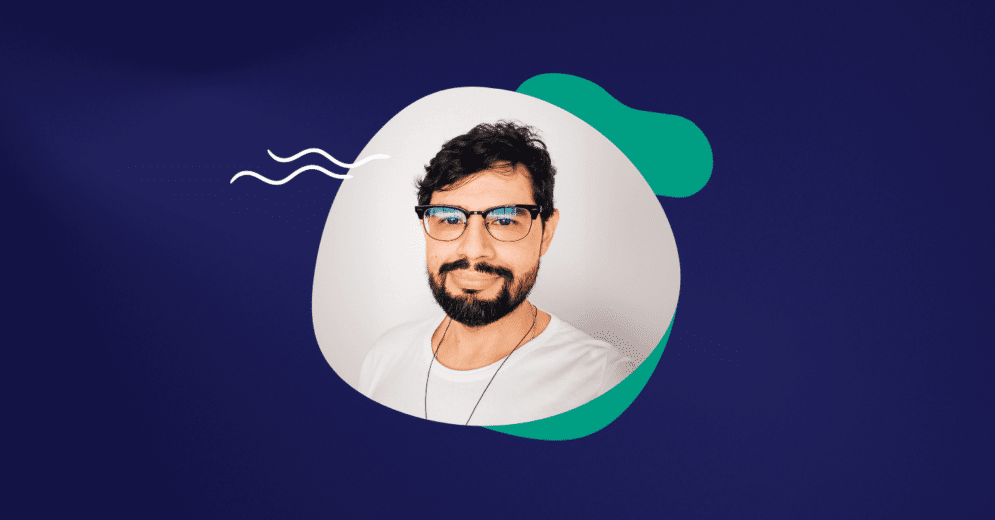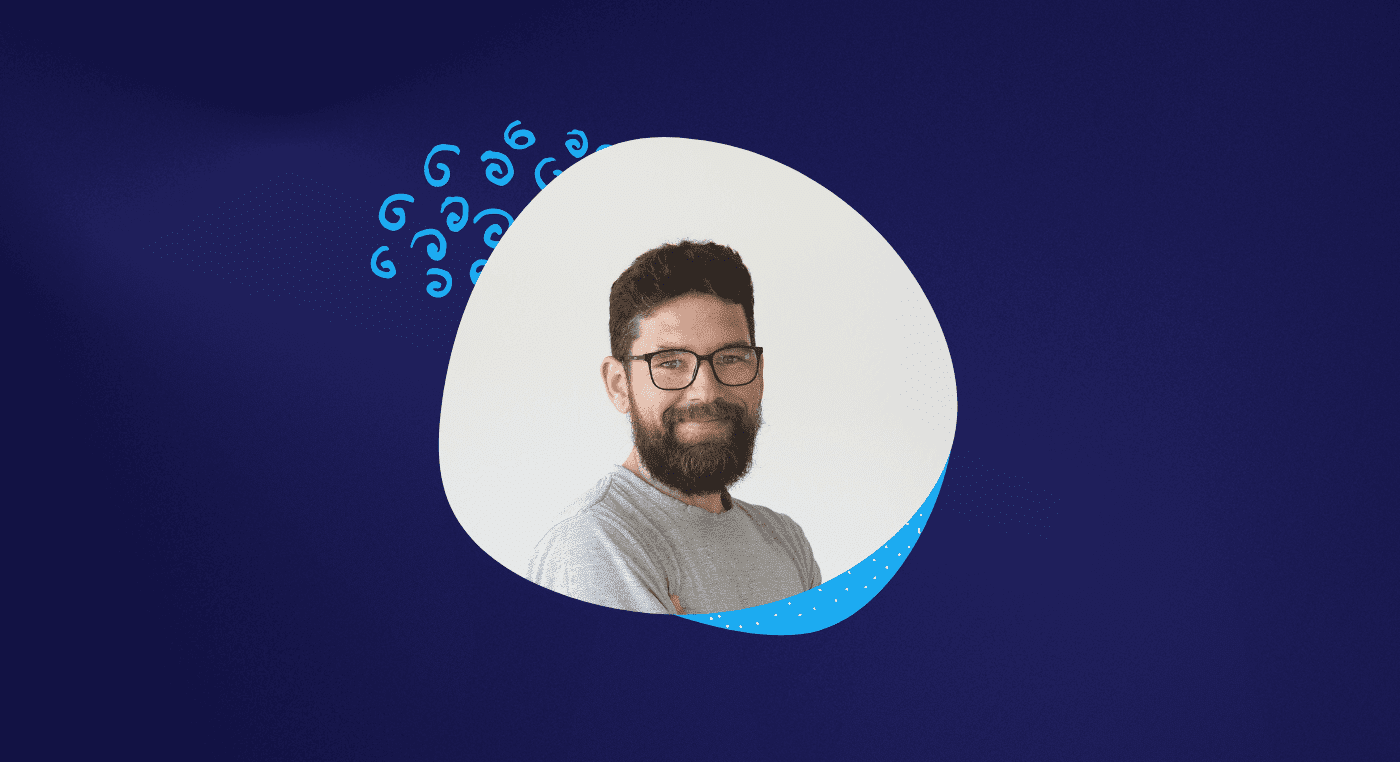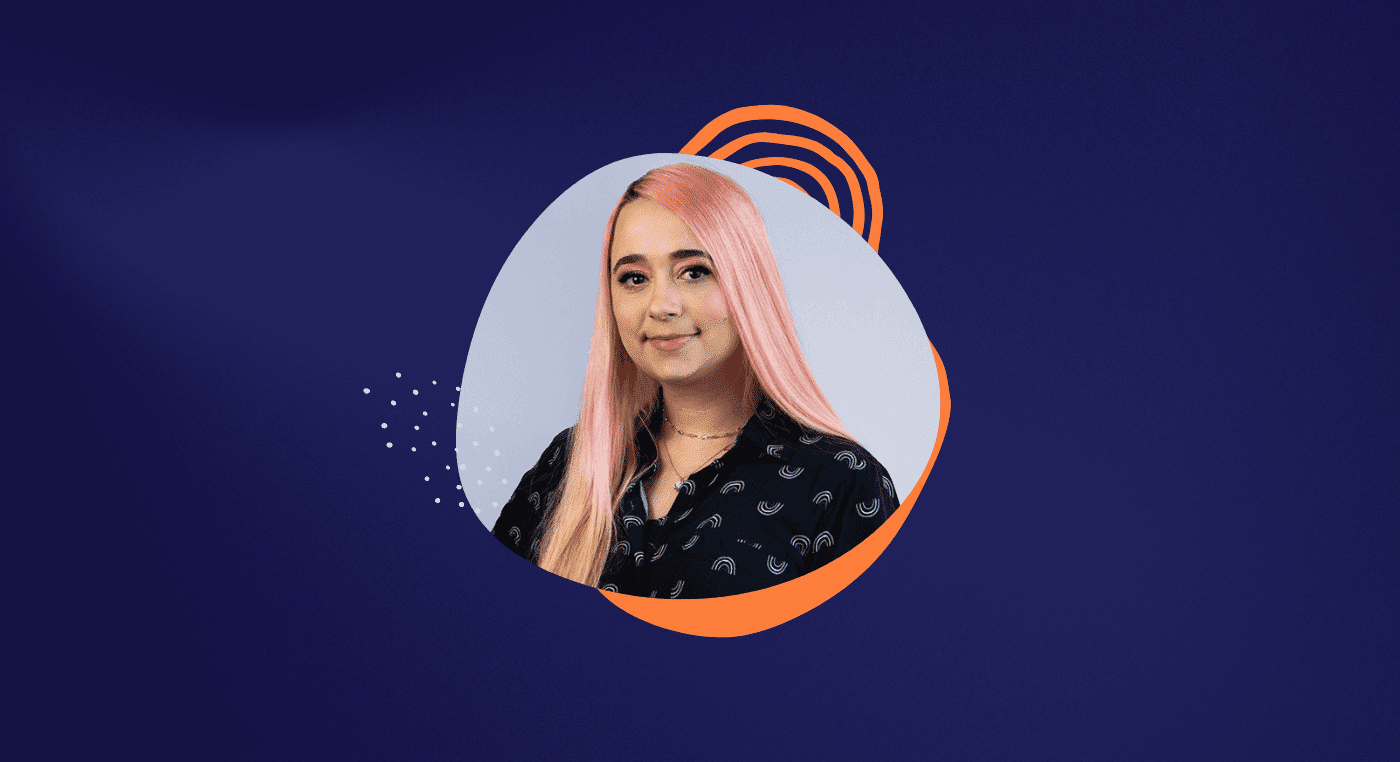In this interview, we spoke with our student Marcello Sarmento, who made the exciting transition from graphic design to the captivating realm of Game UX.
Marcello shares his firsthand experiences, highlighting what it's like to work in the gaming industry and shedding light on the similarities and differences between UX design and Game UX.
If you are interested in the field, be sure to check out his tips!
Marcello, thank you for your time. Please tell us a little bit about yourself.
I'm Marcello, from Brazil, and I'm 40 years old. I started working at the age of 14, and ever since my first internship, I've been involved in the field of Design. However, it took me a while to transition into Product design.
During my teenage years, I had the privilege of having access to a computer and video games. I owned an Atari and a Nintendo and played games on the PC. This sparked my initial interest in gaming, but as I grew older, it gradually faded away.
My first encounter with Design was through a small book called "Learn HTML". From there, I started reading and learning code, which further piqued my interest. Eventually, I pursued a degree in Advertising.
Consequently, I worked as an art director in an advertising agency for 18 years. However, there came a point where I became weary of the industry. In advertising, the pay is not particularly good, and the daily exposure to stress in an agency is significant.
How UX Design came along
In 2017, I had my first exposure to UX through a Facebook group I was a part of, consisting of designers in Japan. There I met an Italian UX/UI Designer who worked at a game studio in Japan. We talked about the work dynamics and what it was like to work with games, and he told me about his daily routine.
I found it incredibly fascinating! However, at that time, it remained just an intriguing concept. Due to various circumstances, I continued working in advertising, but I gradually started reading and studying more about UX Design.
In 2019, I made the decision to fully immerse myself in the field and enrolled in an intensive UX course in São Paulo. This decision opened doors for me, providing a deeper understanding of the processes and concepts of user experience and testing, which I still find enjoyable to this day.
Following the course, I got my first opportunity in UX at a software house. I was prepared to move to São Paulo, but then the pandemic struck, and everyone transitioned to remote work, including myself.
Right after that, I was invited to work at another company but left shortly after. So I decided to take a sabbatical, during which I applied for positions in other countries, as I've always aspired to work internationally.
Fortunately, I was offered a position at a game studio focused on mobile and Web3, encompassing cryptocurrency, NFTs, and Play to Earn.
Currently, I work for an independent studio with a broader scope. As a UI and UX Designer, I create designs for both mobile games and PC and console games.

I usually ask questions related to studies in UX Design, but in your case, I wanted to focus on Game UX. So, to start, what is the difference between user experience and player experience?
I'll share my personal perspective, which is: there isn't a significant difference. The variations come into play when we delve into the finer details, such as the aspect of personas. When it comes to games, I find working with personas a bit limiting in establishing a specific persona for a player.
Instead, I employ archetypes and create profiles for distinct groups. This approach was something I learned during my time at the previous company I worked for. Establishing a fixed persona was simply not feasible.
Therefore, the initial step I took was to identify our fan base. It presented an intriguing challenge to discover that approximately 76.3% of our user base originated from the Philippines.
This phenomenon arose from the Filipinos' wholehearted embrace of the Play to Earn concept, which, regardless of personal opinions, is closely intertwined with cryptocurrency.
I won't delve into the controversy surrounding cryptocurrency and related matters as it is not within my purview. Each person has their own judgments on the subject.
But the fact is that through the Play to Earn mechanism, users can earn cryptocurrencies that provide financial assistance at the end of the month. This became particularly significant during the pandemic when many people faced employment difficulties.
Now, about the archetypes, I found that building them and gaining a deeper understanding of their needs and pain points proved far more effective than relying solely on personas.
Reading tip: Persona: Why Is It Essential for Any UX Design Project?
Did you notice any difference between building a game UX and an app experience? Because when it comes to digital products, the experience needs to be smooth and user-friendly. However, in games, there are situations where players face significant challenges!
I've learned and understood that there is a distinction between UX, the player experience, and game design. Game design sets the parameters for fun and enjoyment in the game.
As a UX Designer, my main focus is minimizing friction and ensuring a seamless experience for the player so that their gameplay is not affected.
For example, providing clear information on the menu and addressing ergonomic considerations. Whether the player uses a joystick, keyboard, or even their hands in the case of mobile games. It's important to consider what is most practical: having both hands on the keyboard or using one hand for the mouse and the other for the keyboard.
One of our projects is implementing freedom of choice for players to play on their mobile devices in either vertical or horizontal orientation. So, part of the UX Designer's work is to think about minimizing friction during these transitions.
The player experience takes these factors into account, aiming to reduce friction and provide more enjoyable experiences.
The difficulty level of a game is related to game design. From my perspective, UX is an integral part of game design.

I am a gamer myself, and I've even received job offers from game companies. However, in the end, I turned them down. I fear that working in the industry might affect my passion for gaming. Have you ever experienced something similar?
Well, I don't think so. I've had conversations with people who asked me if being a gamer is necessary to work in UX for games. No, man.
When I returned to work, it had been a long time since I had a console. I bought one because it gives me a professional perspective on user experience rather than a player's perspective.
Because I have to think about how this dynamic works and what the points of contact are. Which platform will the game be released on? PC, console? Which console? I really enjoy doing that. And it hasn't affected my gaming routine. To be honest, I play more on my phone than on the console nowadays.
And what about software? Are they different from what we're used to in other industries?
Like you, I have also worked in enterprises, so we are familiar with tools like Photoshop, prototyping software, Sketch, Figma, and so on. However, in game development, we use Unity and other game engines.
Honestly, I'm currently trying to learn more about this. In the game industry, there is typically a technical person responsible for working on these issues, which essentially involves translating what you design.
I'm learning because the team I work with is very small, and having this knowledge allows us to maintain consistency in the design and conceptual aspects that will be delivered to the player. The more faithfully we can bring what was designed in the discovery phase, the better.
With my team, I try to incorporate dynamic workshops and methodologies. I believe in making decisions collaboratively rather than solely relying on one person's input.
Through this approach, I'm also able to conduct preliminary research and gather feedback on something that is still in its very early stages, even before being able to conduct a playtest.

Is it difficult to conduct meaningful player tests?
Many people struggle to understand what a test entails and approach it with very high expectations. As a result, we are unable to gather highly valid data because people's mindsets are not aligned with the testing process.
High expectations also bring other issues, as the entire community can become toxic and provide mostly unconstructive criticism.
Therefore, conducting a test under such circumstances introduces contaminated and biased variables to your research.
To avoid this, we run internal tests first and then involve some publishers because they are prepared for this type of evaluation.
Reading tip: A Comprehensive Guide to Usability Testing for Designers and Researchers
This perspective brings a paradigm to the designer's work regarding research. In the product realm, we are used to following a linear path. In games, I see that it becomes more complex.
There's a fantastic documentary about God of War 4 that showcases the process of building this iconic game. It delves into all the challenges, problems, expectations, and struggles that the developers faced.
There's a particularly interesting point they highlight. It's the first playtest of the game in a closed room. If I remember correctly, there were 16 people participating in the test. These individuals are testing professionals, so it's a specialized group, and it's fascinating to see how they provide feedback.
It's something I would like to do someday, assemble a more technical team and use it to strike a balance. It's really cool.
I understand that you stumbled into the gaming industry almost by chance. If you were actively seeking a career in this field, what would you do differently regarding your studies or portfolio?
A friend of mine from 2017 shared a great exercise for those who want to enter the gaming industry and build a portfolio.
He suggested taking a game and starting by reconstructing its UI. Identify what you dislike about the interface, the HUD. What bothers you about the Call of Duty HUD, for example? Why don't you like it? What discomfort does it bring?
Conduct research on this problem and benchmark it against other games in the same genre. How do they solve this issue? Once you find a better pattern, create your own version and develop a case study.
Additionally, I recommend exploring books on UI for games. There's a book called The Gamer's Brain by Celia Hodent, which serves as a great reference for UX and UI in games. The author shares insights into the entire process, drawing from her experience as the UX Lead for Fortnite at Ubisoft.
To delve further into the relationship between game design and UX, there's a book called The Theory of Fun that I highly recommend.
Doing things differently
I would have invested more time and effort back then to gain a better understanding instead of rushing into things. When I started working, I had questions like, "How do I conduct user interviews? How do I do this or that?" There are many specific challenges, including demographic and cultural factors.
One of the biggest challenges nowadays, in my opinion, is localization. You can write a text in English; the French, Portuguese, and Spanish translations may work perfectly. However, when it comes to Tagalog, the language of the Philippines, it can break the entire UI because the words are so long.
So, it's important to pay attention to these specificities. Researching words, symbols, and icons is crucial to avoid offending anyone.

In your opinion, what do recruiters expect from those who want to enter the game industry?
I believe it's a lot of what we've already discussed: having a game-focused case study, understanding how this market works, and how the player's experience functions.
It's important to demonstrate that you have knowledge and control over how to distribute elements on a screen, whether for mobile, computer, or TV. That can be very helpful.
Another thing I learned from an interview that I didn't pass is to provide the reasoning behind the decisions you made in your portfolio or mention it during the interview, along with good storytelling.
I received this feedback during that interview, and I took it as a learning experience.
Also, don't get frustrated if you fail a selection process. You can learn a lot from the feedback and insights provided during interviews.
So, if you're looking for your first opportunity to enter the game industry, create a case study, a test, or a layout that showcases your version of a game's UI.
Another tip I can give is to study graphic design tools. You don't need to become a developer, but you should understand how these tools work within your scope as a UX designer.
This will help you communicate effectively with developers. Especially in AAA studios, the larger studios, they expect you to have a higher level of knowledge in this regard.
Reading tip: UX in Game Design: A Player-Centric Approach
How do you see this industry and career opportunity for designers?
I believe that designers, whether in the game industry or enterprise, should fully embrace the opportunities available. We are currently experiencing a digital revolution where technology is advancing rapidly. While the pandemic has had negative impacts on society, it has also acted as an accelerator for technological advancements.
Even before entering the game industry, I had a genuine passion for design. However, working with games has taken my passion to new heights, and I truly love what I do. It's an exciting and fulfilling profession.
My advice for aspiring designers is to invest in continuous learning. In today's digital landscape, all forms of knowledge are valuable, whether they are technical skills or understanding human behavior. Developing strong interpersonal skills and empathizing with the needs and preferences of players are crucial.
It's important to strike a balance between acquiring knowledge and avoiding burnout. At the beginning of the pandemic, I made the mistake of taking on too many courses simultaneously, which resulted in exhaustion. I've since learned the importance of maintaining a more sustainable pace in my studies.
Ultimately, create study habits that align with your personal circumstances and prioritize self-care. By doing so, you'll be better equipped to navigate this dynamic and ever-evolving industry.








